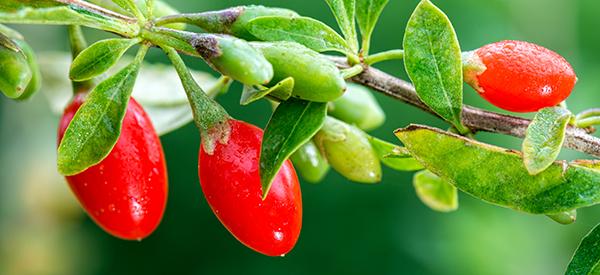
Goji Berry
Goji berry (Lycium barbarum) is a perennial shrub that grows bright red raisin-like fruits. It is considered a superfood and what the Chinese believe to be a fountain of youth for its ability in warding off aging. It is an ingredient in most traditional Asian medicine and cuisines. Goji berries are marketed today as dried fruit, but more popularly as a juice. It holds out promising effects in treating a wide range of illnesses, which further propels its recent popularity.
Goji berry is also known as matrimony vine, false jessamine, or boxthorn from the nightshade family. It came from the Solanaceae family which also includes potatoes and tomatoes. Its common English name is wolfberry. But since early 2000, the goji berry name is widely used even in English-speaking countries.
Before goji berry garnered worldwide attention, it was already used as traditional Chinese herbal medicine. It is mainly used in detoxifying the kidney and the liver and promoting longevity. According to legends, the ripe goji berry fruit falls into a community well. The locals who drank from that well had lived for over a hundred years old.
Where Goji Berry Is Found
Goji berry has a native distribution in China, Japan, and Korea. It grows in the tropical climate and some temperate or terrestrial forests. In Western countries, the goji berry plant is considered exotic and grows only where it is cultivated. Canada and the United States cultivate goji berry commercially to meet potential markets, owing to the expensiveness of imports.
Related: The Complete Map of Edible Plants: Find Out What You Have in Your Area! (Video)
How To Identify Goji Berry
The bright red dried fruits that resemble raisins are the distinctive feature of goji berry. In the wild of its native home, the matrimony vine is a thorny deciduous shrub. Notwithstanding its medicinal value, the plant also makes an attractive hedge in decorative gardens.
 Leaves. Goji is a deciduous evergreen with grey-green, small, and narrow leaves. These leaves are typically fleshy, simple, and arranged alternately in the stem. The size and shape of its leaves vary within the vine – some are elliptical, ovate, lance-shaped, or rhombic.
Leaves. Goji is a deciduous evergreen with grey-green, small, and narrow leaves. These leaves are typically fleshy, simple, and arranged alternately in the stem. The size and shape of its leaves vary within the vine – some are elliptical, ovate, lance-shaped, or rhombic.- Flowers. White or bright purple flowers dot the wolfberry plant from late spring to early summer. It is small, funnel-shaped, and with thin and delicate petals. It also has a tubular sepal that forms a short and triangular lobe.
- Roots. The goji berry plant has an extensive root system that can become quite invasive.It has a deep taproot and tiny rootlets that extend to seek out nutrients and survive climactic extremes. Goji berry is a vigorous spreader with a spread that could reach up to 10 feet.

- Fruits and Seeds. Goji berries are fleshy and simple. They grow from orange, red, and yellow as it matures. Each fruit is ellipse-shaped, about 1 to 2 cm in diameter. A goji berry fruit contains 10 to 30 tiny yellow or golden seeds.
- Stem. Wolfberry is a multi-stemmed shrub that has both erect and sprawling branches. Thus, some parts of the plant are upright while some are lowered and rambling. It can grow from 1 to 2.5 meters tall and is best managed when staked or supported.
Related: Plant Identification Guide – 400 Wild Plants That You Can Forage For (Video)
The goji berry plant has two native varieties, Lycium barbarum, and Lycium chinense. Both differ in their taste and sugar content. The former is cultivated commercially in Northwestern China and is considered the red diamond. L. chinense grows mostly in the southern part of China.
Western countries later introduced two varieties through breeding efforts: the Crimson Star and Phoenix Tears.
How To Grow Goji Berry
Goji berry is a hardy plant that can grow in arid and semi-arid regions with fertile soils. They may also tolerate sandy and light soil, with some plants surviving in coastal regions. Goji berry plants can grow in USDA zones 2 to 7.
Since goji plants are rambling and invasive, they are best planted in containers. Plants for planting are often sold as bare roots. You may also sow it from seeds, but it may take some time for the plant to grow and fruit.
Growing Goji Berry from Bare Roots
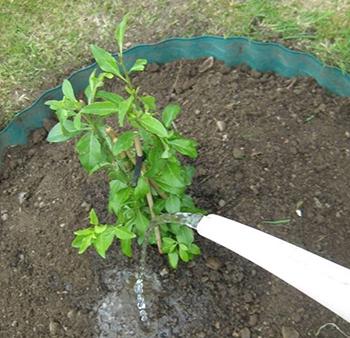 Some online stores and nurseries sell goji berry as bare roots. These roots look dead, but they are very viable for growing. The best season for planting is in early spring when the goji is still in its winter dormancy. It enables the plant to have a better tolerance for climate disturbances.
Some online stores and nurseries sell goji berry as bare roots. These roots look dead, but they are very viable for growing. The best season for planting is in early spring when the goji is still in its winter dormancy. It enables the plant to have a better tolerance for climate disturbances.
You can start propagating the plant by soaking its bare root in water for at least 15 minutes to an hour. Plant the bare root in a large container with potting soil and drainage holes. The container should be large enough to accommodate the roots when you spread them apart.
Tamp down the soil and water the container well. You may add mulch around the plant to help the soil retain moisture. Place the goji berry pot in an area where it can get full sun.
When planting them directly in the garden, space them at least 6 feet apart. If the soil settles below the crown, you can add enough soil to cover the growth.
Growing Goji Berry from Seeds
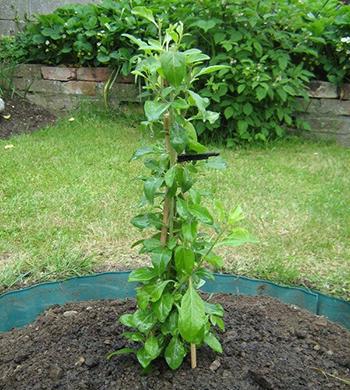 If you want to propagate goji berry from seeds, it is ideal to use seeds from freshly harvested berries. Soak the fruit overnight, remove the seeds from the pulp and dry them before sowing in potting soil.
If you want to propagate goji berry from seeds, it is ideal to use seeds from freshly harvested berries. Soak the fruit overnight, remove the seeds from the pulp and dry them before sowing in potting soil.
Sow one goji berry seed per pot and lightly cover it with soil. Keep the pot moist and place it in a lighted location with temperatures ranging from 65 to 68°F.
You can harden the goji berry seedlings for one year before transplanting them outside.
Related: 10 Plants That You Should Never Plant Together (Video)
Plant Care and Maintenance
Goji berry is a sprawling vine that is ideally grown with a climbing structure or trellis for easy harvesting of its fruits. It will also prevent the thorny branches from invading your garden. This plant is hardy and requires little maintenance and the following growing requirements: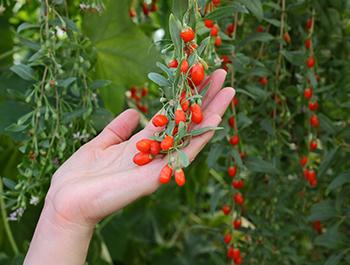
- All types of soil with a pH level between 6.5 to 7.0
- Regular watering and more frequent in winter
- Regular pruning to prevent overgrowth
- Full sun
How To Harvest Goji Berry
The goji berry shrub is quite gangly, but it will not proliferate as wide and fast as other vines. Putting up a support structure is only necessary for harvesting its fruit easily. A small trellis will tame the plant, so you don’t have to navigate your way around its thorny stem.
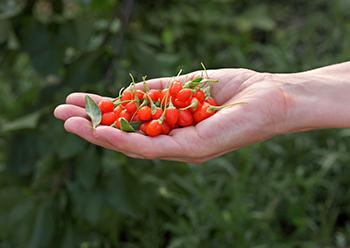 The leaves of the goji berry are available for harvest throughout the year. These are ideal for making tea or ground into powder.
The leaves of the goji berry are available for harvest throughout the year. These are ideal for making tea or ground into powder.
Goji berries will ripen in mid-summer to late fall and are ready for harvest when they are fully red. The berries are often hand-picked, unlike other berries. That’s because they are delicate and become easily bruised and turn black. To avoid damaging the goji berries, pickers would pull them slightly to the side. It will reduce the length of the stem that comes with them and prevent squashing the fruit.
The harvested berries are then laid out to dry under the sun or food dehydrators. Goji berries can dry in the dehydrator for three days at 105°F temperature. The freshly harvested fruits can stay in the refrigerator for about two weeks.
What Goji Berry Is Good For And Natural Remedies Made From It
In Chinese medicine, goji berry is a “chi” enhancer, and it works in the meridians of the liver and kidney. Thus, it was used popularly in treating various liver and kidney diseases, including cancer. The presence of powerful antioxidants in the goji berry is beneficial in protecting the body from free radical damage.
According to studies, the high antioxidant potential of goji berries can slow down aging and maintain the health of body tissues. It boosts the body’s immunity and protects the skin from damaging ultraviolet radiation. These properties earn the fruit its superfruit status and reputation as the fountain of youth.
Goji berry is packed with essential vitamins, minerals, and amino acids essential for the body’s health. It promotes better eyesight, healthy skin, teeth and bone strength. It is also useful in promoting cardiovascular health by reducing bad cholesterol.
The fruit extract of goji berries has hypoglycemic properties that can treat diabetes and its complications. It can promote better sleep to improve the body’s overall wellness.
Goji berry can cure a wide range of illnesses that includes:
- Macular degeneration and other ocular or eye diseases
- Diabetes and cholesterol problems
- Prostate problems, impotency, infertility
 Anemia
Anemia- Mental health problems, stress, anxiety, fatigue
- Auto-immune disease or lupus
- Liver problems
- Kidney issues
- Lung diseases
- Fibromyalgia
- Aging
- Alzheimer’s disease
What Parts Of Goji Berry Is Used For Remedies
The bright red and mature goji berry is the most important part of the plant used in many home remedies. It is dried and processed mostly in the form of juice, and is sold commercially across the world. In Oriental medicine, all parts of the wolfberry plant are used as remedies. These are made into tea or decoction and consumed according to the illness of the patient.
But the most potent form of goji berry is its tincture. Thus, aside from wine and juice, goji berry tincture is also available in some food supplement stores. You may also find goji berry available as powdered extract or capsules.
As a superfruit, fresh berries are best consumed raw. But you can also make a tea or smoothie out of dried goji berries. The young shoots and leaves of the goji plant are nutritive and are consumed as a vegetable.
Goji berry also pairs well with other herbs for a powerful nutritional health benefit. Here is a powerful concoction of superfood you can try:
Goji Berry-Ginger Tea
Ingredients:
- 1 tbsp dried goji berries
- ½ inch fresh ginger root, peeled and sliced
- 8 oz. boiling water
- Lemon wedge, optional
- Honey, optional
Steps:
- Rinse the dried goji berries in fresh water.

- Put the berries in a cup. Add the sliced ginger and a wedge of lemon if desired and pour into the boiling water.

- Let the tea steep for at least 10 minutes until the water changes into a tea-like color.

- Discard the ginger slices and add some honey or natural sweetener according to taste.

How to Use this Remedy:
This calming tea is the ideal beverage for drinking in the evening. It helps the body revive itself and improve overall bodily function. It is packed with antioxidants that can boost the immune system and improve the function of the kidneys.
You can also eat the goji berries alone as a snack, add them raw to salads and toppings, or cook them into sweet and savory recipes. Goji berries add a flash of bright color, pleasantly bitter flavor and a chewy texture to snacks, meals, baked goods and other dishes.
What Plants Resemble Goji Berry
| Feature | Goji Berry (Lycium barbarum) | Japanese Cornel Cherry (Cornus officinalis) | Barberry (Berberis vulgaris) |
|---|---|---|---|
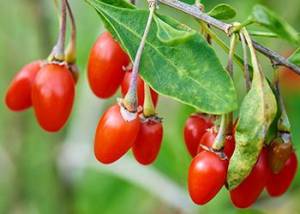 | 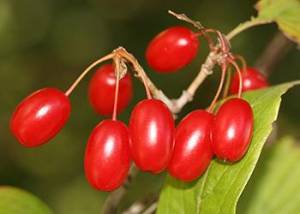 |  |
|
| Size | 100 to 250 cm tall | 50 to 120 cm | 100 to 500 cm |
| Leaves | Grey-green; small; fleshy; simple; alternate; varying shapes and sizes | Green to deep plum in fall; simple; opposite; oval and oblong | Green to pink or red; simple; long |
| Flowers | White/bright purple; small; funnel-shaped | Small; yellow; in clusters | Yellow; small; in alternating whorls |
| Stem | Erect and sprawling; woody; thorny; multi-stemmed | Deciduous; woody | Woody; thorny; upright and multi-stemmed |
| Fruit | Fleshy; red; ellipse-shaped | Red; ellipse-shaped; berry-like | Small; oblong; red; fleshy |
| Scent | Faint fruity, earthier scent | Plant has no distinctive fragrance | Unpleasant odor |
Warnings and cautions
Like most herbal medicines, goji berry in any form, including the raw fruit, should be taken in moderation. Do not consume the berries at more than 150g in a single serving. Goji berry supplements are safe for consumption for at most three months. When taken excessively, it can lead to hypertension and a condition called toxic hepatitis.
Pregnant women should avoid taking goji berry as its high selenium content can cause birth defects. The safety of goji berry in lactating women is not yet established. Thus, it is better avoided by nursing mothers.
People with pollen allergy, digestive troubles, and taking medications should also avoid taking goji berries. People with allergies to tobacco, nuts, tomatoes and peaches should avoid goji since it can cause a similar allergic reaction.
Always check with your doctor before taking any food supplements to weigh their potential benefits and side effects
What Happens if You Drink Cranberry Juice Every Day?
The Most Powerful 40 Remedies You Can Find in The Wild (Video)
How to Use Mulberry Medicinally
DIY Vitamin Gummies For The Whole Family
10 Berries You Should Look For In The Woods

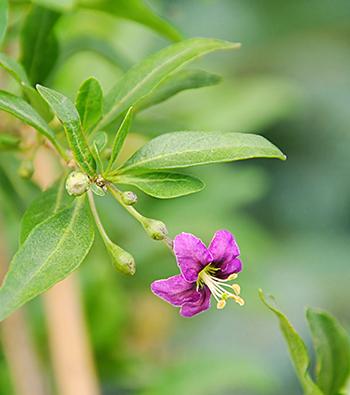 Leaves. Goji is a deciduous evergreen with grey-green, small, and narrow leaves. These leaves are typically fleshy, simple, and arranged alternately in the stem. The size and shape of its leaves vary within the vine – some are elliptical, ovate, lance-shaped, or rhombic.
Leaves. Goji is a deciduous evergreen with grey-green, small, and narrow leaves. These leaves are typically fleshy, simple, and arranged alternately in the stem. The size and shape of its leaves vary within the vine – some are elliptical, ovate, lance-shaped, or rhombic.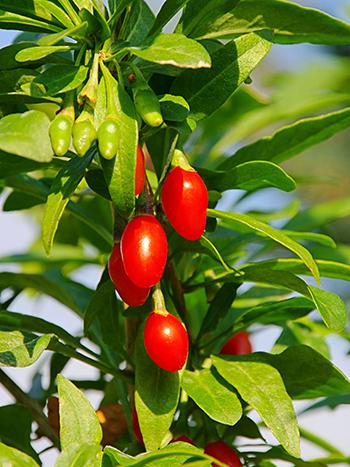
 Anemia
Anemia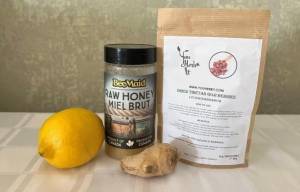

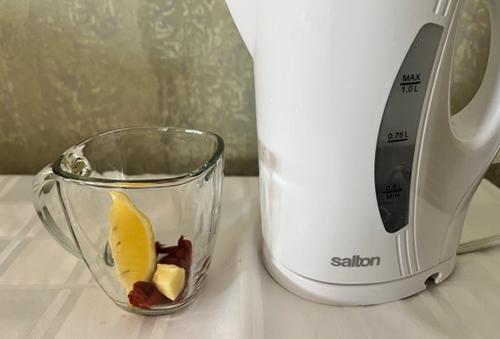
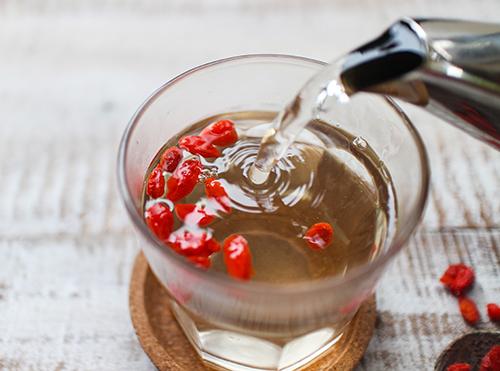


Goji berries are easy to grow and taste good but just eating one will make me slightly disoriented the next day. It does not have that affect on most people.
Goji grow fine in Indiana. Easy to start from seed and I understand very easy to start from cuttings. I want to expand my patch and will take cuttings this spring
I also live in Indiana and planted a goji a couple of years ago. Only got 2 or 3 berries from it and it did not come back up last year. The deer eat on lots of my plants so I’m thinking that’s what happened.